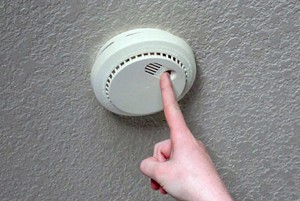Home »

Smoke alarms a critical home safety tool
by Wayne Price,
Director of Cranbrook Fire & Emergency Services
When was the last time you tested the smoke alarms in your home? Was it last week? Last month? A year ago?
If you’re like many people, you may not even remember. Smoke alarms have become such a common feature of our households that they’re often taken for granted, and aren’t tested and maintained as they should.
 However, working smoke alarms are a critical fire safety tool that can mean the difference between life and death in a home fire. Smoke alarms can significantly increase your chance of surviving a residential fire. Many of the deaths associated with house fires could have been prevented with the proper smoke alarm protection.
However, working smoke alarms are a critical fire safety tool that can mean the difference between life and death in a home fire. Smoke alarms can significantly increase your chance of surviving a residential fire. Many of the deaths associated with house fires could have been prevented with the proper smoke alarm protection.
As a member of the fire service for 29 years, I’ve seen the devastating effects of fire first-hand; the burn injuries, the loss of homes and possessions are distressing. What’s even worse is witnessing a family’s anguish after a loved one has been seriously injured or killed in a fire.
Cranbrook Fire & Emergency Services will be hosting local Grade 3 students throughout the week of November 17-21 and we are hoping to better educate the public about the true value of working smoke alarms.
My sincere hope is that all Cranbrook Grade 3 students will participate in our Fire Prevention Week activities, and that their families make sure there are working smoke alarms installed throughout their homes. These simple steps can help make a life-saving difference, and prevent the potentially life-threatening impact of fire.
Here are some additional smoke alarm tips to follow:
– Install smoke alarms in every bedroom, outside each separate sleeping area and on every level of the home, including the basement.
– Interconnect all smoke alarms throughout the home. When one sounds, they all sound.
– Test alarms each month by pushing the test button.
– Replace all smoke alarms, including alarms that use 10-year batteries and hard-wired alarms, when they are 10 years old or sooner if they do not respond properly.
– Make sure everyone in the home knows the sound and understands what to do when they hear the smoke alarm (Fire Escape Plan).







